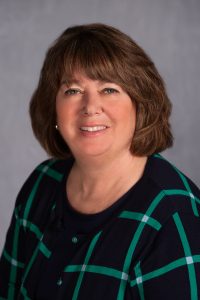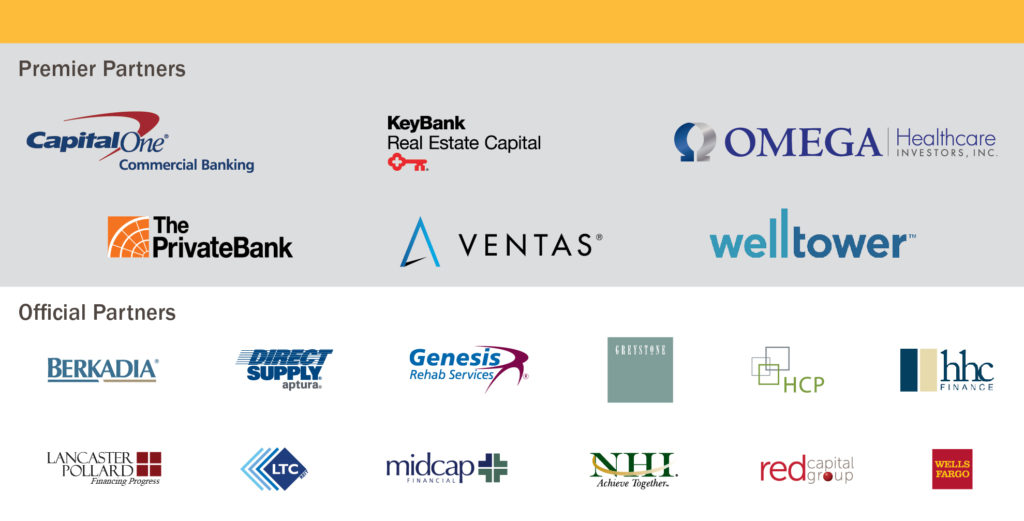August 2016
How to Boost the Bottom Line with Revenue Management
NIC Conference Set to Explore New Pricing Models
Everyone is familiar with the annual rent hike. But it just might become obsolete as operators adopt revenue management practices to raise (and lower) rents based on current demand.
“Seniors housing has been really behind other industries,” said Kai Hsiao, executive vice president of senior housing asset management at HCP, Inc., a large REIT based in Irvine, Calif. “We need new strategies for pricing.”
A detailed presentation on pricing strategies to capture revenue that might have otherwise been left on the table will be given by Hsiao at the 2016 NIC Fall Conference, September 14-16, in Washington, D.C.
Hsiao will be joined by fellow panelists Scott Estes of Welltower Inc., Ryan Novaczyk of New Perspective Senior Living, and Kenneth Segarnick of Brandywine Senior Living for the session, “Thinking Offensively: A Game Plan for Enhancing the Value of Your Operations and Real Estate.”
NIC recently spoke to Hsiao to preview his presentation on revenue management. Before joining HCP last May, Hsiao was vice chairman at Holiday Retirement, the only major seniors housing operator to use revenue management as a pricing strategy.
Looking back, Hsiao said revenue management first became popular in the 1980s when the airlines realized that empty seats could be filled if prices were lowered to create more demand. Conversely, prices could be raised during periods of peak demand to generate more revenue.
The realization came at a time when computing power was ramping up and analytics emerged as a way to make better business decisions. So the new approach was applied to pricing, and it paid off.
American Airlines credits revenue management for an extra $500 million in annual income. The strategy boosted annual revenues at Delta Airlines by $300 million.
Other industries soon followed. National Car Rental, for example, staved off bankruptcy by using the approach.
Several real estate sectors have already embraced revenue management. The hospitality industry adopted it about 20 years ago. And the multifamily sector has introduced revenue management over the last decade.
“It’s surprising that seniors housing operators still raise rents once a year,” said Hsiao. “That approach does not take into account the ever-changing dynamics of supply and demand.”
Hsiao gives the example of an assisted living building with one studio apartment and 10 one-bedroom units for rent. Using revenue management, the rent on the studio apartment should be raised since it’s more in demand. The price of the one-bedroom units should be lowered because they’re less in demand. Otherwise, he added, the units may remain unleased.
During Hsiao’s time at Holiday Retirement, the company was able to dynamically change rental rates of every available unit on a weekly basis.
Community fees can also be adjusted with revenue management. “Maybe the operator should be asking for a higher community fee for certain units, or in certain markets,” said Hsiao.
Data Collection Is Top Priority
It’s important to note that revenue management is data driven, noted Hsiao. Operators must invest in systems to collect and interpret data, though Hsiao believes the expenditure will more than pay for itself.
A robust pricing model should be able to determine a property’s true rental rate and community fee. So the model must factor in any discounts and incentives to find the actual rate on every unit for a certain period of time. “The more data you put in, the better,” said Hsiao.
About five years’ worth of data is necessary to build a reliable pricing model. And though operators may think they need to track competitive rental rates, Hsiao said that information can be extrapolated by analyzing historical changes in leasing volume.
Revenue management offers a number of benefits, according to Hsiao:
- The strategy can help operators understand a building’s market position based on the price point. For example, the analytics might show that the building is actually the cheapest property in the market when that’s not how the operator wants to position the building.
- Large operators with multiple properties in a single market can use revenue management to differentiate buildings by price. Each property can be targeted at certain consumers, thereby avoiding direct competition between co-owned properties.
- Operators under pressure to meet escalations in triple-net leases can maximize rents with revenue management. And, as more new buildings open and create more competition, the strategy could be crucial to success. “It’s more important than ever to have dynamic pricing,” said Hsiao.
- Revenue management can change what Hsiao calls the “wheeling and dealing” culture of senior living. Too many operators present a bad image to consumers by seeming to negotiate the price of care for a frail elder, he said. “Hospitals and doctors don’t do that.”
Though revenue management practices are not widespread in the industry, Hsiao hopes his presentation at the NIC conference will encourage seniors housing operators to at least consider the strategy. For example, HCP is currently discussing how to implement the concept with its building operators. “We should all be open to the idea,” he said.
Friday at the Conference: Insights into the Current Markets
The Friday morning sessions at this year’s NIC Fall Conference will feature some terrific learning opportunities. Among them will be the 9:15 AM session titled, “Double Your Knowledge About Current Markets.” In this session, you will have a chance to hear NIC’s chief economist, Beth Mace, present her thoughts on the length of this economic recovery and if we are near the beginning of the next recession.
Also scheduled to speak are Chuck Harry and Bill Kauffman of NIC, and Ray Thivierge of Genesis HealthCare. Timothy J. Fox, with Senior Resource Group, will both moderate and present.
The Tale of Two Labor Markets
Pundits of disparate viewpoints paint either an ominous or a cheery view of the labor markets. But for seniors housing operators and capital providers, labor market pressures are becoming front and center in decisions regarding expansions, acquisitions, and development. What will rising wage pressures and shortages of labor mean for operating margins?
You’ll hear about some strategies to combat these pressures and learn how NIC’s data can help provide reference points, guidelines and solutions. Distinctions between NIC’s new data sets and the metrics historically reported by the NIC MAP® Data Service also will be discussed.
A Deep Dive into Data
During the session, Mace will talk about how the federal government spends its $3.8 trillion budget and how the $438 billion deficit of fiscal year 2015 will grow as spending on Social Security and Medicare rises because of the aging baby boomers. With greater scrutiny on each dollar the government spends, skilled nursing operators and care providers will feel a growing pressure to provide the best services for the best price for this increasing population.
In this context, Mace and other speakers on the panel will showcase NIC’s recently launched skilled nursing initiative. They will present up-to-date information and trends on revenue per patient day by payor source including skilled mix, quality mix, and patient day mix. This session will also provide attendees with insider information about other data initiatives from NIC MAP, including recently released metrics on an additional 41 markets it now tracks.
In addition, Mace will also provide a brief mid-year update on seniors housing market conditions including occupancy rates, supply trends, and demand patterns. Is there reason for concern with regard to new supply entering the market or are demand conditions strong enough to absorb additional inventory?
This session will also describe capital market conditions and provide timely updates on transaction volumes through the first half of 2016. Is the market as active as last year? Who’s playing and who is on the sidelines?
Personal Looks into How Data Is Used
Two C-level operators will share their experience in using NIC MAP data and how the service provides value to their companies. You’ll learn how a seniors housing operator and a skilled nursing operator use NIC MAP data for asset management, portfolio management, and acquisition and disposition decisions.
“The NIC MAP data is the first step in any analysis that we do looking at any market,” said panel moderator Timothy Fox in an interview with NIC about this session. “It gives us both a qualitative and quantitative understanding of how that market works and the dynamics around it so we really can understand the competitive environment.”
It’s a lot to jam into a short period of time, but a lot to miss out on. If you’re attending the conference, be sure your travel plans allow you to attend this and the other great sessions scheduled for Friday morning.
Also on Friday: Valuations Session
The ever-popular session on valuations will be held on Friday morning at the conference. This session is always well-attended, so be sure to delay your travel plans until after 12 noon so you do not miss one minute of Friday’s programming.
This year, the valuations session will be moderated by NIC’s Bill Kauffman, who will discuss NIC data and draw insights from three respected capital providers: David Boitano of Ventas, Inc., Carolyn Nazdin of KeyBank Real Estate, and Jim Tellatin of Short & Hansen. The panel will discuss the current valuation environment, recent trends affecting valuation, and the key factors that influence an investor’s view of value and cap rates.
Facing Uncertainty, Looking to Opportunity
Jerry Doctrow Previews Session with Public Operator CEOs
Post-acute care is an industry in flux. While it takes in $59 billion each year in Medicare payments alone, payments are declining, and providers in the space are feeling pressure on their operating profits.
“It’s a big business,” said Jerry Doctrow, principal at Robust Retirement®, LLC, “but it’s struggling.”
The post-acute care strategies four leading public operators are employing will be discussed at “Somewhere Over the Rainbow: Where Winning Post-Acute Strategies Attract Investors,” a session Doctrow will moderate at the 2016 NIC Fall Conference next month. It’s a session, he said, that post-acute and traditional private-pay seniors housing providers alike should not miss.
On the post-acute side, providers are facing reduced volumes, reduced lengths of stay, and lower revenues primarily as a result of the transition to Medicare managed care and other initiatives designed to control costs. At the same time, the transition from fee-for-service to a bundled payment system has produced a lot of uncertainty. “Nobody quite knows how that’s going to play out,” said Doctrow.
These are issues most private-pay seniors housing operators typically have not concerned themselves with in the past, but that’s changing, Doctrow indicated. Assisted living as well as post-acute most likely will see an increase in short-stay clients from what he calls “younger seniors”: the 65- to 75-year-olds beginning to develop hip, knee, and cardiac issues. Over the next 5 to 10 years, Doctrow predicts this population will grow significantly, thanks to the baby boomers. Clients will not be old enough to move into seniors housing, he explained, but will be “increasingly users of both acute and post-acute services.”
Operators are recognizing the growing opportunity by serving short-stay patients, either by offering post-acute services or bringing in other providers to provide them. The session’s panel consists of four CEOs of “major, sophisticated” public operating companies that brought in $4.6 billion collectively in the second quarter, Doctrow said. The CEOs are: Benjamin Breier of Kindred Healthcare; Larry Cohen of Capital Senior Living Corporation; George V. Hager, Jr. of Genesis HealthCare; and Andy Smith of Brookdale Senior Living. The panelists will share their companies’ diverse strategies for addressing the changing reimbursement environment and senior population.
Ultimately, Doctrow said, attendees on both sides of the industry—private-pay seniors housing and post-acute care—should leave the session understanding the issues, the range of strategies, and the right strategy for their organization.
And it’s a session that capital providers will want to take part in, too. Doctrow said that in the past, there have been “pivot points” of great change in seniors housing and care, where those who had positioned themselves well experienced financial success. He believes the industry is reaching another pivot point in post-acute care.
“Everything looks very negative and uncertain,” he said. “But you’ve got underlying demographics that look very strong, and it’s a great opportunity financially to invest.”
Innovative Sessions and Influential Speakers
In addition to the well-respected leaders speaking at the “Somewhere Over the Rainbow” session, a panel of operator CEOs will speak at a session that encourages interaction with attendees.
This year’s conference will feature a second session paneled by top operating company executives. “A Candid Conversation with Operator CEOs” is a new take on the traditional panel session. Attendees will be able to text their questions for the CEOs to moderator Allen Lynch, an attorney with Nixon Peabody LLP. This session is designed to be fast-paced and interactive, providing attendees with insight into the CEOs’ specific business practices and thoughts on the needs and circumstances many operators face today.
Participating CEOs
- Dan Madsen, Chairman & CEO, One Eighty/Leisure Care
- Patricia Will, Founder & CEO, Belmont Village Senior Living
- Shamim Wu, President & Chief Operating Officer, Silverado
NIC Talks Returns in 2016
NIC Talks, a series of 12-minute presentations by industry insiders and outside experts and disruptors, returns to the NIC Fall Conference for a second year. The speakers will share their visions of aging 10 years from now, when the boomers begin turning 80 in 2026.
This year’s themes range from the thought-provoking—successful aging, disruptive technologies, and the transformation of aging—to the provocative—bucket lists, immortality, and bringing an end to nursing homes. They are designed to start the important conversations that all who serve seniors (and want to in the future) need to be having now.
How Demographic Changes Are Shaping Industry Growth
Experts Take a Deep Dive into the Numbers at Fall Conference
Here’s an eye-opener: The first wave of baby boomers probably won’t be ready to move to a senior living community until 2026 when they reach age 80.
So where does that leave building operators and owners for the next decade? Are there enough seniors to fill all the buildings being developed? Will there be a shortage of workers to help an aging population? Where is the senior population growing? Where is it shrinking?
The demographics driving the senior living industry will be discussed at the upcoming 2016 NIC Fall Conference during a widely anticipated session called, “Population Shifts: What Changing Demographics Mean for Markets and Products.”
“There’s a lot of talk about demographics and seniors housing,” said Beth Burnham Mace, NIC chief economist and session participant. “People should attend the session to learn what the real demographics show.”
The session format will be a dialogue between Mace and Kelly Cook Andress, founder and president of Sage Senior Living. They recently spoke to NIC to preview the session and what attendees can expect to learn. “It’ll be a lively discussion of where the rubber meets the road between demographics and practicality,” said Andress.
The session will cover a number of important trends. For example:
- The population is aging. By 2020, the group of people age 75 and older will grow by 15%, or 3 million people. Seniors age 82-87 will grow by 7%, and those age 87 and older will grow by 8%. “It’s a substantial group,” said Mace.
- Over the last 100 years, the average life expectancy of Americans has increased by about 30 years. As people live longer, their housing needs are changing.
- A monumental shift is underway among residents as members of the “Greatest Generation” are replaced by the much smaller “Silent Generation” (born 1928-1945).
- “We’ve been spoiled” said Andress, referring to the easy-to-please “Greatest Generation.” By comparison, the “Silent Generation” is wealthier and more comfortable demanding quality than their predecessors.
- To meet those expectations, seniors housing operators must provide services, staffing, and facilities that are not only functional, but also fashionable and flexible. For example, common areas with sliding walls allow operators to change the size of rooms easily to accommodate different activities. “We have to be able to turn on a dime,” said Andress.
- While the baby boomers aren’t ready yet to move to a senior living community themselves, their impact is already being felt by building owners and operators. The boomers are usually the ones making the decision about where an elderly parent will live. Boomers often pay part of the bill too. “The baby boomers are the influencers,” said Mace.
- People are having fewer children than they did in previous generations. As a result, the caregiver ratio, or the number of adult children available to care for an elder, is shrinking. “It will be a big demand driver for seniors housing going forward,” said Mace.
- State and local demographic shifts can unlock new opportunities for developers, Mace observed. The Midwest and Northeast will have the highest concentrations of seniors. But the big states will continue to have the largest populations of seniors, namely, Florida, California, New York, Texas, and Pennsylvania.
Worker Shortage Ahead
The session will also cover less publicized trends that will impact the industry.
A worrisome situation is the lack of personal savings among consumers. About 31% of non-retirees have no retirement savings, according to a 2014 report by the Federal Reserve. That number includes a quarter of those over age 45. “People are not prepared,” said Mace, adding that creating an affordable product is a big challenge for the industry.
A somewhat overlooked trend that could hamper operations is the growing scarcity of employees. A study by the industry group Argentum predicts a shortage of 1.2 million caregiving workers by 2025.
And according to a study published in June 2015 by researchers at the University of California-San Francisco, at least 2.5 million more workers will be needed to provide long-term care to older people in the United States between now and 2030.
“We have to spend more time on our staff,” said Andress. “Caregivers are not commodities.” She recommends that staffers receive as much time and attention as new residents. Training is key, along with peer mentoring and leading by example.
“We have to change our relationship with our staff,” she added. “We have to give them respect.”
Millennials—sometimes known as the “Cause Generation”—are the largest group of potential employees, Andress noted. Building operators need to stress the mission-driven nature of senior living in order to attract and retain these young workers. “That’s what millennials want,” she said. “We do great things for seniors. Let’s sell ourselves that way.”
Bundles of Joy
The Effects of Bundled Payment Rules on Skilled Nursing
Skilled nursing providers are set to be affected by a proposed rule by CMS that will create three new bundled payment programs and put a greater emphasis on post-acute care.
The three new programs are for acute myocardial infarction (AMI), also known as a heart attack; coronary artery bypass graft (CABG); and surgical hip/femur fracture treatment (SHFFT). CMS’ proposed rule will amplify the agency’s efforts to move toward alternative payment models and away from traditional fee-for-service financing of healthcare for Medicare beneficiaries.
As part of the proposed rule, CMS announced that the new bundled payments will be a mandatory pilot for hospitals in select geographic areas, to be chosen at random. The pilot will begin as a five-year project on July 1, 2017. Hospitals currently participating in certain alternative payment models such as the BPCI demonstration would be exempt from the new bundled payment requirements.
The Bundled Payment Approach
Bundled payments are one of the many ways CMS is striving to reach its goals of financing a large part of Medicare reimbursements through alternative payment models (APMs), which are designed to encourage providers to coordinate care and avoid duplicative services to reduce cost and improve quality.
Traditionally Medicare reimbursed for healthcare services on a fee-for-service basis, meaning every service rendered as part of a medical episode was reimbursed separately. Traditional fee-for-service is also known as volume-based purchasing, because providers are incentivized to produce the highest volume of services possible to maximize reimbursement.
Now CMS is actively pursuing value-based purchasing (VBP). Under VBP, the payment made to a provider by Medicare can vary in some form based on the value of the treatment. In other words, providers are incentivized to provide high-quality care in an efficient manner. CMS aims to tie 90% of fee-for-service Medicare reimbursement to quality under VBP by 2018.
Compensation with CMS’ New Bundled Payment Models
In a bundled payment, CMS provides a single reimbursement for an episode of care. For the three new models—AMI, CABG, and SHFFT—announced in July, the bundled payment includes post-acute care for the 90 days following hospital discharge. All care received in relation to the initiating episode (e.g., a heart attack or hip fracture) in the 90 days following hospital discharge are reimbursed as part of the single bundled payment, including when that care is provided at a skilled nursing property. This is known as an actual episode payment amount.
If the actual episode payment amount for a beneficiary is less than the target payment amount identified by CMS, the hospital coordinating care receives a reconciliation payment. Beginning in the second year of the program, if the actual episode payment is more than the target price, the hospital would repay CMS the difference. Low-quality hospitals may be ineligible for the reconciliation payment, according to the proposed rule. Unlike the comprehensive care for joint replacement (CJR) model, some adjustments to the target payment amount may be allowed for certain patients in these new bundles.
An Emphasis on Post-Acute Care
The proposed rule emphasizes post-acute care, including skilled nursing spending. In particular, CMS identified usage of post-acute care as one area of improvement for the treatment of CABG and AMI.
A significant portion of Medicare spending goes toward rehospitalizations for these conditions, which CMS hopes to reduce through increased post-acute care utilization and coordination. CMS proposes incentivizing the hospitals that coordinate patient care to use post-acute services for cardiac rehabilitation. Separately, CMS may also include incentive payments for cardiac rehabilitation for some hospitals not participating in the AMI or CABG bundled payment programs. The incentive payment is a separate bonus payment and is not eligible for gainsharing among all care providers in the way that the bundled payment is shared.
CMS Zeroes in on Chronic Conditions
AMI, CABG, and SHFFT differ from CJR, which began in April and is required for 67 U.S. markets. One major difference noted by CMS in the proposed rule is that AMI, CABG, and SHFFT affect populations with chronic conditions. The CJR model is designed for elective surgery, while these new models cover conditions that may require planned or unplanned treatment. The patient population served by the AMI, CABG, and SHFFT models often suffer from several chronic conditions, such as diabetes and hypertension, which drive up the cost of healthcare and increase the complexity of the acute and post-acute treatment. Like the three new proposed bundled payment models, CJR provides a single bundled payment for knee- and hip-replacement surgeries, including the post-acute care costs.
The average annual cost per capita for persons with six or more chronic conditions is over $32,000, compared to less than $2,000 for a beneficiary with one or no chronic conditions. The share of Medicare beneficiaries with six or more conditions is 15%, yet that population represents almost 50% of total Medicare spending. The proposed bundles from CMS are aimed at containing the costs of care for such individuals.
Source: CMS 2014
Next Steps
The proposed rule is now out for public comment. When CMS proposed the CJR model, the agency received over 400 public comments. This rule will likely generate as many or more comments, because stakeholders include not only hospitals, post-acute care providers, and orthopedic surgeons, but cardiologists, as well. CMS may take several months to reconcile the public comments before issuing a final rule. While the target date for implementation is July of next year, the fate of these new bundled payment models rests in the rule-making process. A change in leadership at the executive level could stall the rule come inauguration, but such an outcome is unlikely because of the momentum bundled payments and APMs have generated.
Bundled payments are dependent upon the ability of acute care providers to work with other provider types, such as primary care physicians, home health agencies, and skilled nursing providers. For CMS to reach its 2018 goals for Medicare financing, there needs to be increased care coordination across silos. Incentives such as the post-acute care incentive payment built into the new bundles may encourage various provider types to partner in care provision. Now more than ever, post-acute care providers stand to benefit from CMS-driven transformations in healthcare reimbursement through strategic partnerships where efficiently delivering high-quality care is the number one priority for all involved.
Liz Liberman, NIC Healthcare Analyst
Post-Acute Care Under Discussion at the Conference
The transformation of the U.S. health care payment and delivery model will have long-lasting repercussions not only for skilled nursing, but also for traditional private-pay seniors housing, as well. Three NIC Fall Conference sessions on Thursday, September 15, will highlight CMS initiatives and the post-acute strategies seniors housing and care providers are beginning to employ:
Opening General Session: Healthcare’s Big Changes—and Why Seniors Housing Also Should Pay Attention
Keynote speaker: The Honorable Mike Leavitt, Founder & Chairman, Leavitt Partners
The Ever-Changing World of Skilled Nursing: The Impact of CMS Initiatives
Moderator: Ray Thivierge, Chief Strategy Officer, Genesis HealthCare
Speakers:
- Trissie Copses Farr, Senior Vice President, Formation Healthcare Group, LLC
- Jason Feuerman, SVP, Strategic Development & Managed Care, Genesis HealthCare
- Dr. David Gifford, Sr. VP, Quality & Regulatory Affairs, AHCA
- David Stordy, COO, Mainstreet
Somewhere Over the Rainbow: Where Winning Post-Acute Strategies Attract Investors
Moderator: Jerry Doctrow, Principal, Robust Retirement, LLC
Speakers:
- Benjamin Breier, President & CEO, Kindred Healthcare
- Larry Cohen, CEO, Capital Senior Living Corporation
- George V. Hager, Jr., CEO, Genesis HealthCare
- Andy Smith, President & CEO, Brookdale Senior Living
Seniors Housing & Care Industry Calendar
September 2016:
14-16 2016 NIC Fall Conference, Washington, DC
October – November 2016:
16-19 AHCA/NCAL Convention & Exposition, Nashville, TN
24-26 ULI 2016 ULI Fall Meeting, Dallas, TX
30-2 LeadingAge: 2016 Annual Meeting and EXPO, Indianapolis, IN
15-17 REITWorld: NAREIT’s Annual Convention, Phoenix, AZ
NIC Partners
We gratefully acknowledge our following partners:




























